Paul Jones on the drum gear that powers drum 'n' bass maestros Sigma
Inside Paul's hybrid rig
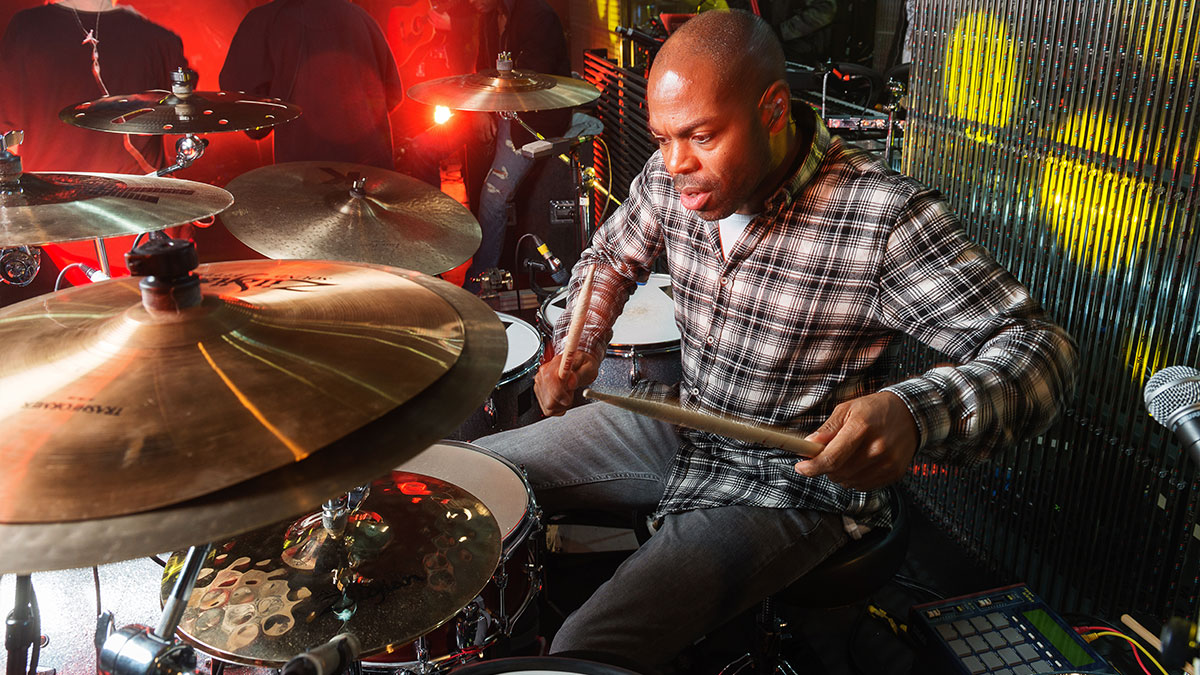
Inside the Sigma drum rig
The demands on today’s live session drummers are increasing at a rapid rate.
Today, more than ever, drummers need to be electro whizz kids as well as human metronomes. Just take the gig with drum ‘n’ bass duo Sigma, a job which requires an encyclopedic knowledge of all things hybrid.
Brit drummer Paul Jones is the man at that particular kit, and when we spoke to him we got straight to the heart of how Paul juggles the acoustic and electronic demands of the gig.
“All the drums [on the Sigma live gig] are played live,” he said. “The stuff on track is mainly 32nd-note and 16th-note kick builds and sometimes filtered loops as well. When the song’s in full flow and we’re playing choruses, that’s me playing the whole time.
“If you’re not playing people know because they can hear it. Not just the visuals, the actual sound. Even just adding a tiny tip of the stick on the cymbal to punctuate stabs or whatever’s going on in the music, it adds a high frequency end to the music and straight away turns it into a live thing.”
So there’s plenty for Paul to get to grips with here, not just the nuts and bolts of the beats, but also electronics, sounds and the key gear that matches up to this drum ‘n’ bass gig. Here, Paul gives us a guided tour around some pivotal parts of his Sigma rig.
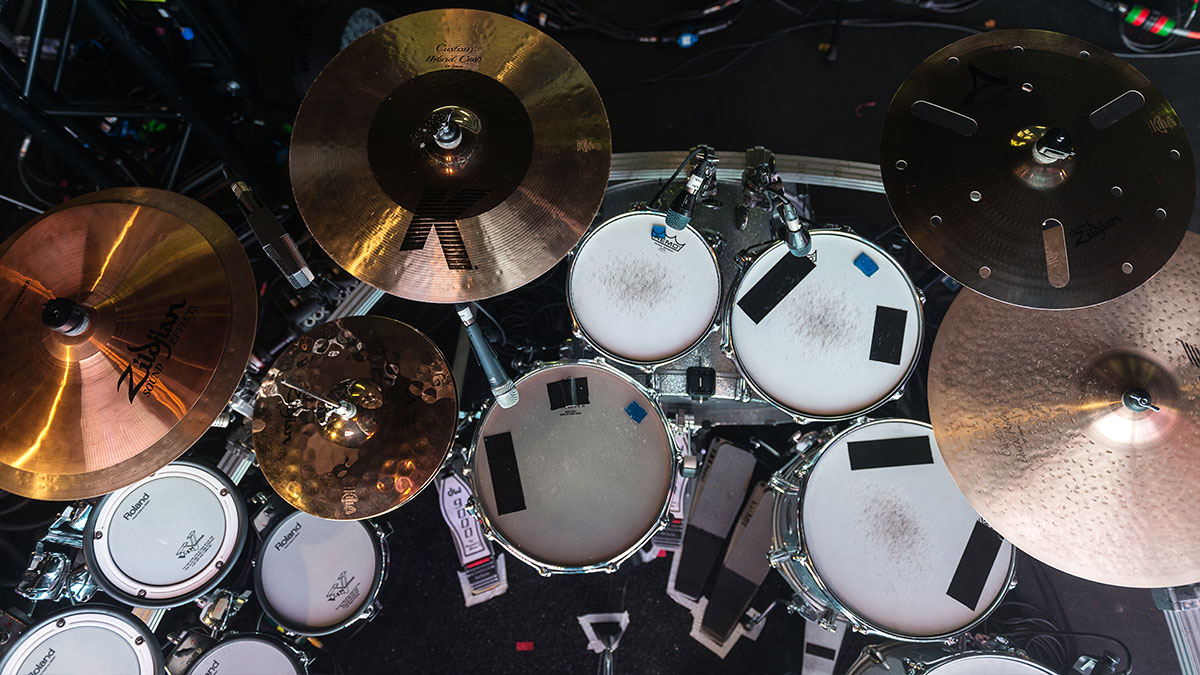
Almighty drums
“I started using Sakae quite recently. I bought a kit from them at the end of 2014. I was introduced to them by Ash Soan who was playing the drums for a while. I’d played a few different kits but never had a drum endorsement before. This kit I knew sounded like the old Yamaha kits that I really liked.
“The toms sound amazing, the floor toms sound big and punchy and full, they have a big tuning range, they sound like tasty drums. It’s a Sakae Almighty maple kit – 22"x18" bass drum, 10"x7" and 12"x8" toms, 14"x13" and 16"x14" floors. I’ve very recently acquired a Sakae snare, a 14"x6" bubinga. It’s what they call their orchestral, classical snare, only because it came with a Fiberskyn head and nylon snares. It sounds great, it’s really sensitive and quite loud.”
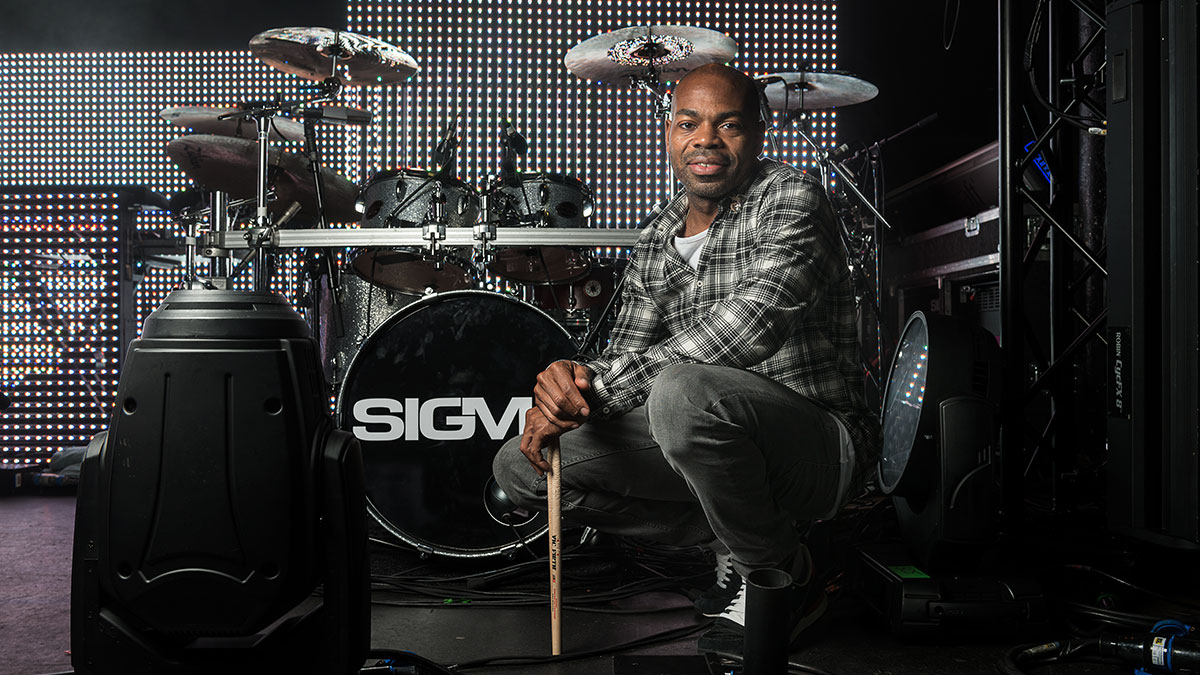
Head and sound choices
“What I’m trying to do with my tuning, with help from my drum tech, is to cut ring as much as I can. To have a nice sweet and full sound, but cut the ring. I like fat sounds generally. I’m not the kind of guy that’s going to tune my toms up like the gospel guys do. I’m a bit more traditional I suppose.
“At the moment I’m using Remo Coated Vintage Emperors on the toms, clear Powerstroke 3 on the bass drum. The snare has a Diplomat underneath that makes it ultra sensitive, I’ve just had to dampen it. It’s the crispest snare drum I’ve ever played but it’s a nice combination.
“The drums sound big and dry."
“The drums sound big and dry. I have dampening on there. In my later years I’ve learned to play without burying the [bass drum] beater. I used to pound it and leave my foot there. I don’t do it quite as much these days because I like the tone when I release it.
“I generally like to have something inside the bass drum, definitely touching the batter and lightly touching the resonant head. Apart from keeping on top of the tuning [the dampening] stays the same. My ears are always open and my drum tech knows I’m quite fussy, and our front-of-house engineer would tell me if something was up.”
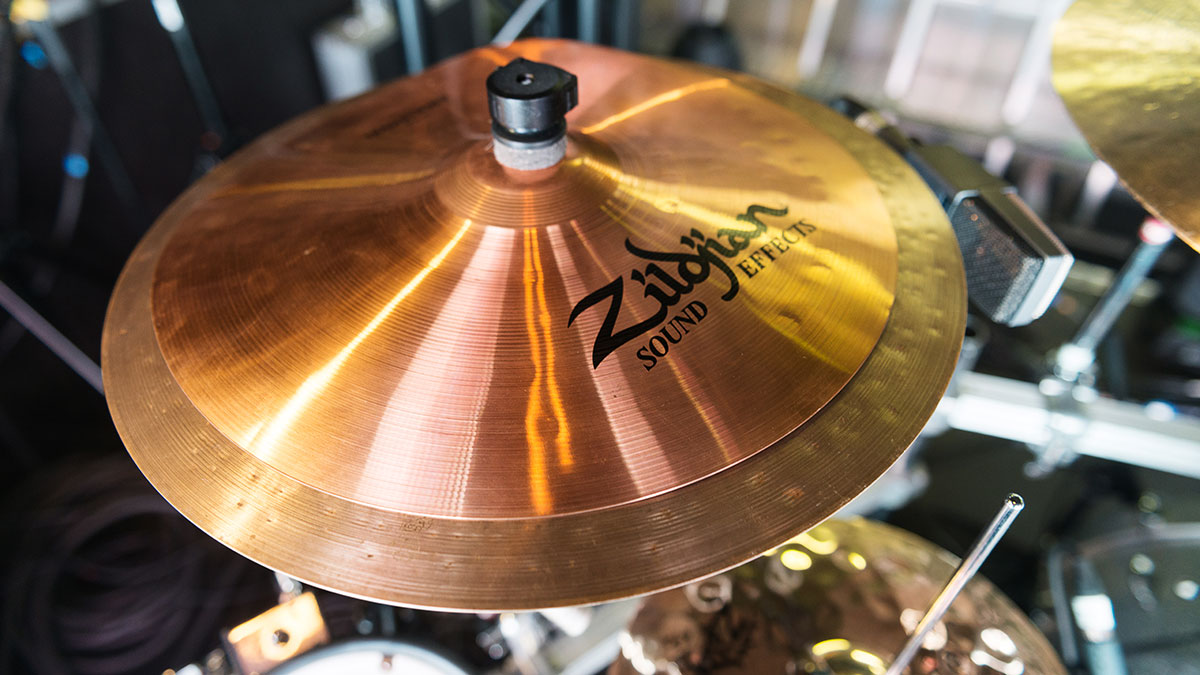
Mad for metal
“The hats I have at the moment are 13" Pocket hats. I grabbed those the last time I went to Zildjian.
"For a long time I was using K Session hi-hats, which I really love, but I wanted something that cut through the music more and was dry. There’s no extra ring or overtone from them. They remind me a little bit of the old Zildjian Remix hats – very crisp sounding and they suit the music.
“I’ve got a 14" Trashformer stacked on top of a 16" KCustom Dark crash. To the right of that I have the 17" K Custom Hybrid crash, then the 16" A Custom EFX. The ride currently is a 22" KCustom Dark ride.
“Over on the right-hand side is an 18" AThin crash with a 12" Spiral Stacker on top, and that’s just for a bit of fun. I used all Ks before this. I just thought I would try something different. For this gig, some of the older drum’n’bass tunes are pretty hardcore, so those cymbals really lend themselves to those songs more.”
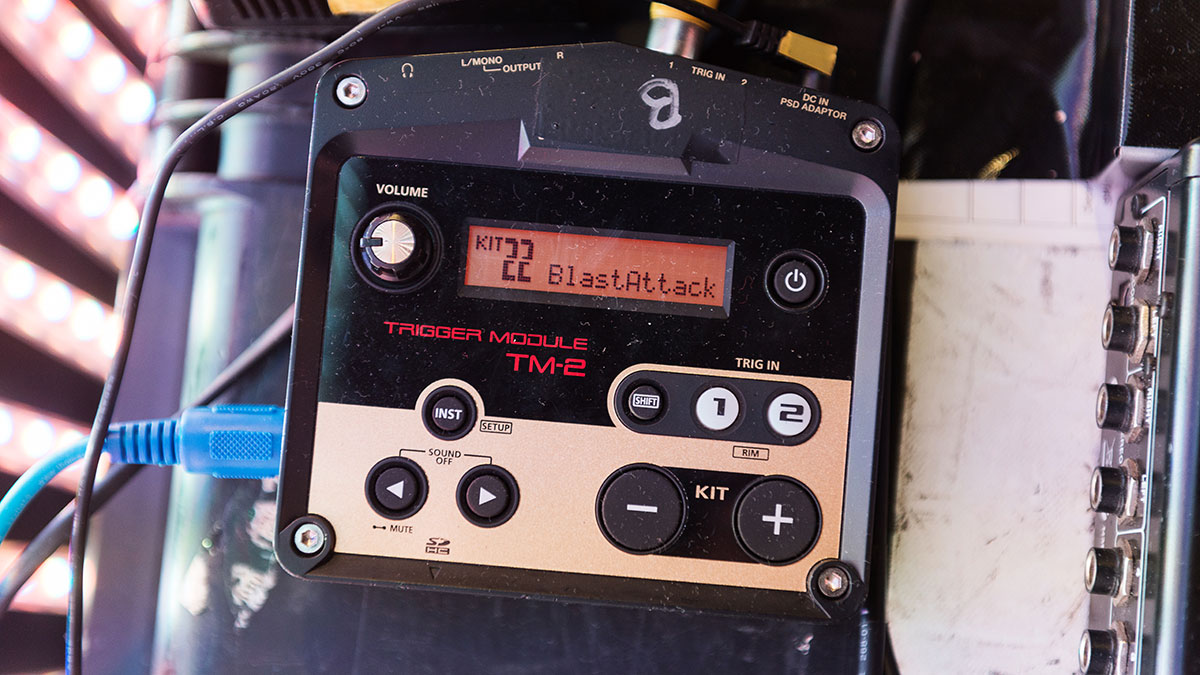
Hybrid
“The Roland TMC-6 [trigger to midi converter] is the thing that’s taking the majority of the inputs. I bought the TM-2 because they don’t make the TMC-6 anymore!
"The TMC-6 is what I’m using for the input of most of the bits and pieces. The TM-2 is handling e-kick two and the TMC-6 is handling everything else.
“I don’t have any triggers on the acoustic drums. At the moment there aren’t any sounds I can think of where I’d need to combine the acoustic and electronic sounds. I quite like having it like this.
"It’s a very true reproduction of the studio sound, but with real cymbals."
"There will be some gigs where you need a fatter sound on the kick or you need a completely different sound to the snare and it will maybe be more appropriate to mix sounds together, but this way it’s a very true reproduction of the studio sound, but with real cymbals.
"I use toms in the fills sometimes but I stay away from the snare. If you start doing that you’re in danger of starting to sound like a college band [if you overplay].”
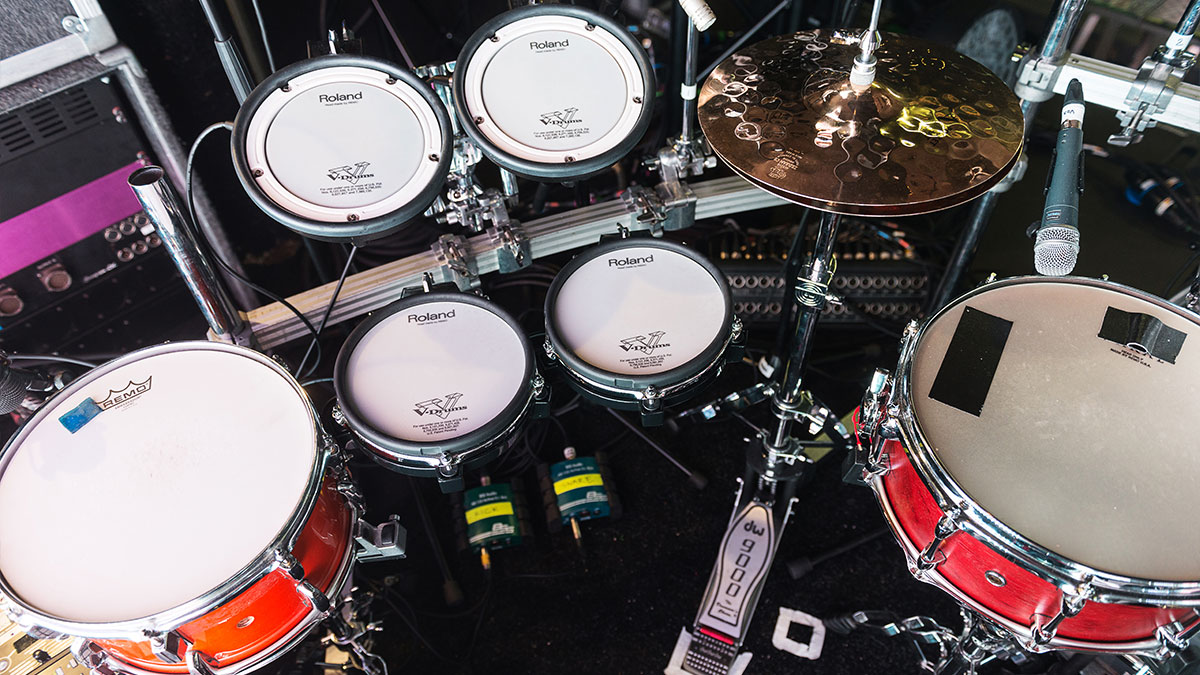
Getting started
“[To get started with electronics] you need to be getting to grips with the music of today if you’re not already. If all you do is play acoustic kit, fair enough, but you need to be listening to dance, electronic music and pop and be able to identify the sounds you’re going to be working with.
“Then you need to move to the equipment and try and find those sounds. Maybe you can sample some stuff if you’re working with a band and they have drum stems from the studio. You’re going to need a laptop and have some kind of knowledge of a digital audio workstation like Cubase, Logic or Ableton. Then start to play with the sounds.
“You’re not going to get the gig if you turn up and don’t know how to play these sounds, you can’t play them like a regular pattern either. you’ve got to have knowledge of structures, blocks of bars, all that stuff.”
I'm MusicRadar's eCommerce Editor. In addition to testing the latest music gear, with a particular focus on electronic drums, it's my job to manage the 300+ buyer's guides on MusicRadar and help musicians find the right gear for them at the best prices. I dabble with guitar, but my main instrument is the drums, which I have been playing for 24 years. I've been a part of the music gear industry for 20 years, including 7 years as Editor of the UK's best-selling drum magazine Rhythm, and 5 years as a freelance music writer, during which time I worked with the world's biggest instrument brands including Roland, Boss, Laney and Natal.
